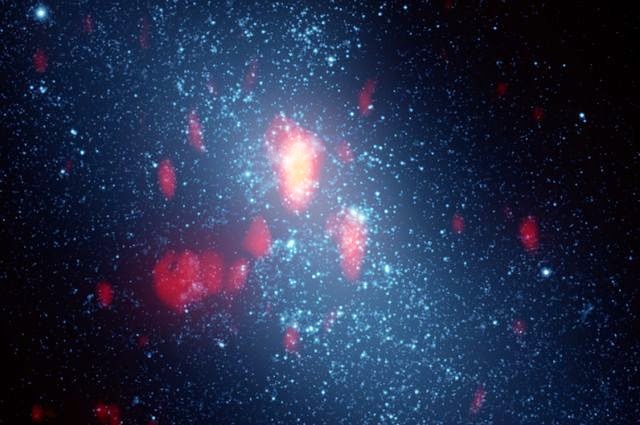HAWC Observatory is going to study the universe's most energetic phenomena, Zee News reports.
Supernovae, neutron star collisions and active galactic nuclei are among the most energetic phenomena in the known universe. These violent explosions produce high-energy gamma rays and cosmic rays, which can easily travel large distances, making it possible to see objects and events far outside our own galaxy.
The High Altitude Water Cherenkov (HAWC) Gamma-Ray Observatory, located 13,500 feet above sea level on the slopes of Mexico's Volcan Sierra Negra, is the newest tool available to visualize these explosive events and learn more about the nature of high-energy radiation.
Construction is now complete on HAWC's 300th and final detector tank, and the observatory will soon begin collecting data at full capacity. This milestone will be marked with an inaugural event at the observatory on March 19-20, 2015.
University of Maryland's Jordan Goodman said that HAWC truly is the only observatory of its kind and will give them a clearer picture than ever before of the high-energy wonders of the universe.
Each of HAWC's detectors is a huge tank containing 50,000 gallons of ultrapure water with four light sensors anchored to the floor. When gamma rays or cosmic rays reach Earth's atmosphere they set off a cascade of charged particles, and when these particles reach the water in HAWC's detectors, they produce a cone-shaped flash of light known as Cherenkov radiation. The effect is much like a sonic boom produced by a supersonic jet, because the particles are travelling slightly faster than the speed of light when they enter the detectors.
The light sensors record each flash of Cherenkov radiation inside the detector tanks. By comparing nanosecond differences in arrival times at each light sensor, scientists can reconstruct the angle of travel for each particle cascade. The intensity of the light indicates the primary particle's energy, and the pattern of detector hits can distinguish between gamma rays and cosmic rays. With 300 detectors spread over an area equivalent to more than three football fields, HAWC is able to "see" these events in relatively high resolution.
From its perch atop the highest accessible peak in Mexico, HAWC will have 15 percent of the sky within its sights at any given time. As the Earth rotates, so too will HAWC's field of vision, meaning that HAWC will see up to two-thirds of the sky every 24 hours.










